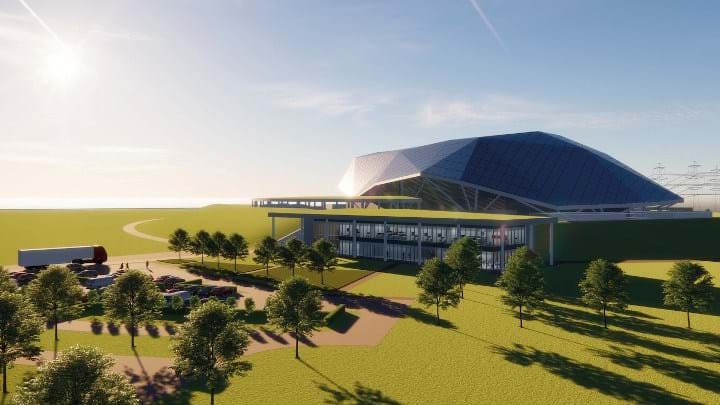Process developers awarded £44m to advance UK hydrogen economy

MEMBRANE reactors, chemical looping processes and thermochemical splitting of water by advanced nuclear reactor are among dozens of hydrogen projects that have received a share of £44m (US$55m) in development funding by the UK Government.
The Government is backing 28 projects through its Low Carbon Hydrogen Supply competition, following plans announced last month in its Energy Security Strategy to reach 10 GW of hydrogen production by 2030. The majority of the funding, totalling just over £38m, has been given to five projects to physically demonstrate their technologies, with the remaining 23 projects sharing just over £6m to conduct feasibility studies.
The Tyseley Ammonia to Green Hydrogen project is one of the largest to receive funding. It has been awarded £6.6m to build an integrated membrane reactor that would produce 200 kg/d of hydrogen from ammonia for use at a refuelling station near the Tyseley Energy Park in the Midlands. The project is led by Gemserv and uses ammonia cracking technology developed by H2SITE in the Netherlands. It says the technology can decompose and separate fuel cell purity hydrogen simultaneously in the same vessel, increasing recovery and energy efficiency.
The technology could be used to decentralise hydrogen production and overcome some of the key engineering headaches involved in storing and transporting hydrogen. As explained in our series on the hydrogen economy, gaseous hydrogen storage requires high pressure vessels of up to 70 MPa while liquid storage needs cryogenic tanks maintained at -253°C. Ammonia, however, is a promising “hydrogen carrier” owing to its high hydrogen content, established distribution network and ability to be liquefied at much milder conditions.
Andrés Galnares, CEO of H2SITE, said: “Ammonia is one of the most promising, fast growing, hydrogen carriers. H2SITE’s integrated membrane reactor technology can convert it into H2 locally with highest efficiency in the market, reaching fuel cell purity without moving parts.”
Two projects that are working to integrate wind turbines and hydrogen production also got funding. Vattenfall will integrate technology at a turbine in the Aberdeen Bay offshore windfarm to desalinate seawater, electrolyse it using wind power, and then send the hydrogen ashore for use by customers. Its 8.8 MW Hydrogen Turbine 1 is set to begin operations in 2025. There is also the Dolphyn project being developed by Environmental Resources Management (ERM). It too will electrolyse seawater at a floating wind turbine at a site in the Celtic Sea with commercial operations expected in 2028.
Feasibility study funding
Among the 23 projects that are conducting feasibility studies, there is the H2Upgrade project led by the University of Cambridge that plans to develop a chemical looping process using waste resources to split water thermochemically.
Essar Oil is developing a project that will use gasification to produce hydrogen from high-carbon byproducts produced at its Stanlow refinery. It says it will use the feasibility study funding to explore and optimise various combinations of technologies and process configurations to produce cost competitive hydrogen while capturing more than 90% of CO2 for permanent storage.
Frazer-Nash Consultancy and the Nuclear Advanced Manufacturing Research Centre will study the feasibility of developing a technology demonstrator and test facility that would simulate the heat and power output of small modular nuclear reactors (SMRs) and advanced modular nuclear reactors (AMRs). The facility would allow companies to test and refine their technologies including using nuclear energy to produce hydrogen through high-temperature electrolysis and thermochemical splitting of water.
Neil Murray, Business Development Manager for Advanced Nuclear Technologies at the Nuclear AMRC, said: “It is well understood that nuclear power will play an important part in meeting 2050 net-zero targets as a provider of baseload electricity to meet ever-increasing demands, but nuclear power’s cogenerative potential is absolutely massive and largely untapped.
“This demonstrator will seek to unlock the potential for nuclear as part of the wider energy mix, by answering the questions that would otherwise go unanswered until SMR and AMR reactors are operating in the 2030s.”
UK Business and Energy Secretary Kwasi Kwarteng said: “The British Energy Security Strategy made clear that we are backing hydrogen not just as a viable source of clean, affordable homegrown energy but as an emerging industry of the future in which the UK can lead the world.”
Recent Editions
Catch up on the latest news, views and jobs from The Chemical Engineer. Below are the four latest issues. View a wider selection of the archive from within the Magazine section of this site.




